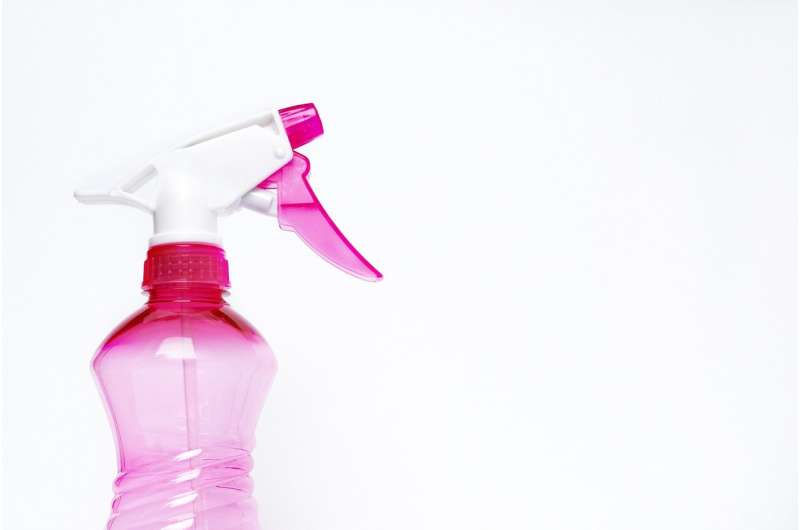Study finds decrease in eye exposures from household cleaners

The holidays are upon us, and as families visit Grandma and Grandpa's and other homes that may not be used to having little ones underfoot, it's an important reminder to safely store dangerous products. Household cleaning products represent a major source of exposures reported to U.S. poison control centers, and they commonly involve the eyes, especially among children.
A new study conducted by the Center for Injury Research and Policy and the Central Ohio Poison Center at Nationwide Children's Hospital analyzed data regarding eye exposures associated with household cleaning products from 2000 through 2016 and found a decrease in the number of exposures during this period. However, the number of these exposures among young children remains high.
The study, published today in Eye, found that U.S. poison control centers received 319,508 calls for household cleaning product-related eye exposures during the study period, averaging 18,795 exposures annually or about two every hour. Approximately a quarter of eye exposures were associated with bleaches (26%), followed by wall/floor/tile cleaners (13%), disinfectants (11%), laundry detergents (6%) and glass cleaners (5%). The product subcategories associated with the greatest proportion of major medical outcomes were drain cleaners, oven cleaners and automatic dishwasher detergents.
The Poison Prevention Packaging Act of 1970, which requires child-resistant packaging for a variety of household substances, has played an important role in the decline of pediatric poisoning. "Despite these efforts, young children continue to be the age group with the highest rate of eye exposure to household cleaning substances," said Henry Spiller, MS, D.ABAT, co-author of the study and director of the Central Ohio Poison Center at Nationwide Children's.
Parents and caregivers can help keep children safer from household cleaning products by following these tips:
- Store safely. Store all household cleaning products up, away, and out of sight of young children. Close containers and put them away immediately after use.
- Keep it traditional. People who have young children or adults with dementia or developmental disability that live in or visit their home should use traditional (liquid or powder) laundry detergent, which is much less toxic than liquid laundry detergent packets.
- Save the national Poison Help Line number (1-800-222-1222) in your cellphone and post it near your home phones. Call immediately if you think your child has come into contact with a household cleaning product or other dangerous product. You do not need to wait for symptoms to develop to call.
In this study, children two years of age experienced the highest rate of exposure. "A number of factors likely contribute to the exposure risk at this age, including a large amount of time spent in the home, newfound mobility, curiosity for unfamiliar and intriguing stimuli, and an inability to recognize potential danger," said Spiller. Cleaning products may be particularly alluring to young children due to their colorful packaging and contents and unique scents.
Contrary to the overall trend, eye exposures to laundry detergent increased 126% over the study period, which was mainly driven by laundry detergent packet-related eye exposures. Laundry detergent packet-related eye exposures increased by 1,960% from 2012 to 2016 while the number of exposures from other types of laundry detergent remained relatively constant.
"Young children, in particular, may burst open the packets, resulting in ingestions as well as skin and eye exposures," said Spiller. In this study, the product subcategory of laundry detergents was the only one with a significant overall increase in exposure frequency, with this increase beginning in 2012, the year laundry detergent packets were introduced to the US market, emphasizing the urgent need to increase prevention efforts that target laundry detergent packets.














